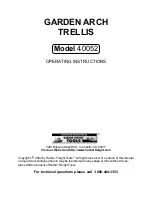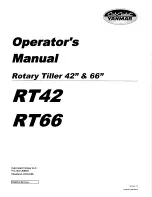
7
the test voltage is changed during a test, the new test voltage will be
displayed briefly.
When the test has stopped, the display continues to show the voltage
present on the test leads. Pressing either test voltage
s
or
t
button will
then display the test voltage immediately before the end of the test.
Test start / stop button
A test will only start if this button is pressed, held and then released as
soon as the red high voltage warning indicator LED lights. The LCD and
red LED high voltage warning indicators flash when the test starts.
A test will not start if the button is released before the red LED shows,
or pressed continuously for longer than 5 seconds. This is a safety
feature to prevent a test being started inadvertently.
The presence of a voltage greater than 50 V on the test leads is indicated
with flashing high voltage warning indicators. Testing is disabled if the
external voltage exceeds 50 V.
Testing will stop if the test start / stop button is pressed again, the
preset test time is reached, or, if the unit is not in burn mode, insulation
breakdown is detected.
When a test has finished, the instrument will discharge the load, which
may take some time. The operator must always check the load has been
discharged before touching the test leads.
Ω
/I button
Pressing this button toggles the digital and secondary displays. The
details available when scrolling the secondary display will depend upon
the test mode selected, whether timers T1 and T2 have been set, and
Power On/Off button
The instrument will only turn on if this button is pressed, held and then
released when the display responds. The instrument will not turn on if
the button is released before the display responds, or if the button is
held down for too long. This is a safety feature to prevent the instrument
being inadvertently turned on.
The instrument is turned off either by pressing the button again, or if the
instrument is running on the battery, by timing out after 10 minutes of
inactivity.
Upon switching the instrument on the display will first show ‘Ini’ while it
undergoes a self-checking routine. When Ini disappears, the instrument is
ready for use.
Test voltage
s
and
t
buttons
Using these buttons one of five test voltages can be selected: 250 V, 500
V,
1 kV, 2.5 kV, and 5 kV. The selected voltage is shown on the display.
A non standard voltage between 50 V and 5 kV can be selected by
holding down the ‘Fn’ function button whilst operating the buttons. The
selectable voltage is adjustable in 10 V steps between 50 V and 1 kV, and
adjustable in 25 V steps between 1 kV and 5 kV. An auto repeat facility
is enabled when the button is held down, allowing faster travel through
the range.
If there is an external voltage greater than 50 V on the test leads, the
high voltage warning indicators are flashed, and the display shows this
voltage instead. The instrument will not perform a test if this voltage is
greater than 50 V.
During a test the display shows the actual voltage on the test leads. If








































